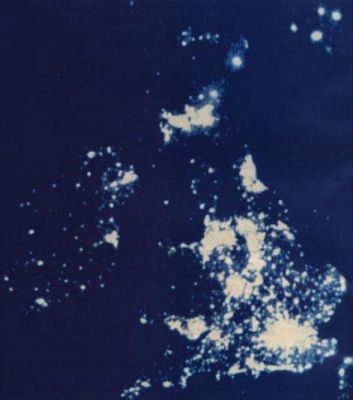Tonight's Observing Prospects

The three factors that will have the greatest impact upon your observing prospects are the weather, the phase of the Moon and the level of light pollution. We have provided below information and links to other sites that will help you assess the prospects for observing tonight and during the coming nights. We have also provided a selection of links to sites with suggestions of things to observe.
Contents
Today's weather in Stratford upon Avon:
A selection of other useful weather links is provided below to help you determine the observing prospects over the next few days:
|
UK Weather Information
Met Office
UK forecast
Current low cloud over UK
Current high cloud over UK |
Other Weather Sites
Jet Stream forecast for Europe
Cloud
types |
The current phase of the moon is important to observational astronomers for a number of reasons.
Firstly, the Moon itself is best observed when the parts of it you wish to see are near the terminator, that is the division between night and day. Objects near the terminator cast a long shadow (in the same way as shadows on the Earth are longer when the Sun is low in the sky) and it is thus possible to visualise the relief of the area being observed. The full moon is a beautiful sight but you are likely to have a better view of craters and mountains when the moon has a partial phase.
Secondly, for astronomers who wish to observe faint objects, the Moon can be a hindrance in that the glow that it creates in the sky can make these objects much more difficult to see. For faint objects such as distant galaxies or nebulae, it is best to observe after the moon has set or before it has risen and generally a week either side of the new moon.
 |
|
Light pollution is not only wasteful of money and the Earth's resources, it also spoils our view of the night sky reducing the number of stars that are visible to the naked eye and making faint objects difficult or impossible to observe. This image of the UK at night illustrates the extent of the problem in our country.
For serious observing of faint objects astronomers are forced to search for sites with dark skies. However, given the extent of the problem this is often not practicable.
Our Light Pollution section gives further information on the steps that can and should be taken to limit and indeed reduce the damage to our night sky.
For observers who have to contend with light pollution our article on Observing Under Light Polluted Skies suggests some practical measures to make at least some observation possible.
SpaceWeather.com – Lots of interesting things to see and news of solar activity.
The Society for Popular Astronomy – includes a guide to this month's sky.
The Planets – Applet to download from the Castle point astronomy Club showing positions of the planets.
Beyond Messier – 100 more things to admire by The Peoria Astronomical Society.
Gallery of 113 nearby galaxies in colour – by Princeton University Press.
Sky & Telescope – Guide to what's in the sky right now.
100 multiple stars – by the Astronomical League.
Seeing the International Space Station – Is it visible tonight?
Satellites – What large satellites are visible tonight?
Iridium Satellites – How to see their brilliant flares.
Return to Guide to Observing Section...
